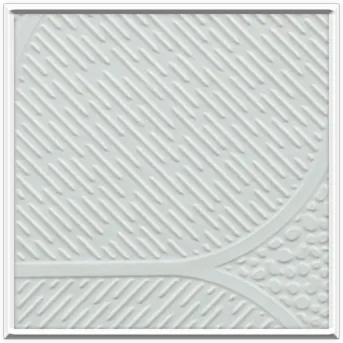Dec . 10, 2024 03:49 Back to list
Installing T-Bar Systems for Suspended Ceiling Grids in Commercial Spaces
The Importance of T-Box for Suspended Ceiling Grids
Suspended ceiling grids, commonly employed in commercial and residential buildings, have become a vital element in architectural design. These ceilings not only improve the aesthetics of a space but also provide practical benefits such as noise reduction and easy access to mechanical systems. At the heart of these structures lies the T-box—a fundamental component that plays a crucial role in ensuring the integrity and functionality of the ceiling grid system.
What is a T-Box?
A T-box, also known as a T-bar or T-grid, refers to the cross-sectional design of the grid system used in suspended ceilings. The 'T' shape is characteristic, resembling a T or a capital letter 'I'. This design allows for a modular assembly of ceiling panels, which can be easily replaced or maintained without extensive renovation. T-boxes are typically made of durable materials such as aluminum or galvanized steel, ensuring longevity and resistance to wear and tear.
Benefits of Using T-Box in Suspended Ceiling Grids
1. Support and Stability The primary function of the T-box in a suspended ceiling grid is to provide support for ceiling tiles or panels. The T-shape ensures that the tiles are securely held in place, preventing sagging or dropping. This stability is paramount, especially in spaces where the ceiling may host multiple lightweight fixtures like lights, vents, or speakers.
2. Ease of Installation T-box systems are designed for straightforward installation. The modular nature enables builders and contractors to quickly set up the grid framework without the need for complex tools or processes. This ease of assembly can significantly reduce labor costs and time on construction projects.
3. Accessibility One of the major advantages of suspended ceilings with T-box grids is the access they provide to overhead services. In commercial settings, for instance, HVAC ducts, electrical wiring, and plumbing often run above the ceiling. The T-box design allows for easy removal and replacement of ceiling tiles, permitting maintenance crews quick access to these systems without extensive invasive work.
4. Design Flexibility T-box grids are available in various sizes and styles, catering to diverse design specifications. This versatility enables architects and designers to create unique ceiling aesthetics that align with the overall vision of the space. Additionally, T-box systems can seamlessly integrate with various ceiling tiles, including acoustic panels, providing both functionality and visual appeal.
t box for suspended ceiling grids

5. Environmental Benefits Many T-box systems are manufactured from recyclable materials, aligning with modern sustainability practices. Furthermore, suspended ceilings can enhance energy efficiency by improving thermal and acoustic insulation. This reduces heating and cooling costs and contributes to a more comfortable indoor environment.
Considerations When Implementing T-Box Systems
While T-boxes offer multiple advantages, several factors should be considered during the planning and installation phases
1. Weight Capacity It’s essential to ensure that the chosen T-box system can support the weight of the ceiling tiles and any additional fixtures. Calculating the load capacity is crucial, especially in commercial spaces that may require additional lighting or ventilation.
2. Acoustic Properties Depending on the intended use of the space, sound absorption may be a priority. Selecting acoustic ceiling tiles that fit within the T-box system can help mitigate noise levels, enhancing the comfort and functionality of offices, schools, and other environments.
3. Regulatory Compliance Compliance with local building codes and regulations is imperative. Ensure that the T-box system aligns with fire safety measures, as certain materials may be required to meet specific standards.
Conclusion
In conclusion, the T-box is an essential element of suspended ceiling grids, providing support, stability, ease of installation, and design versatility. As architectural trends evolve, the relevance of T-box systems remains strong, adapting to the diverse needs of modern spaces. By carefully considering their implementation, builders and designers can harness the benefits of T-boxes to create spaces that are not only visually appealing but also functional and efficient. Whether in a commercial office or a residential environment, T-box grids are undoubtedly a cornerstone of contemporary ceiling design.
-
Quality Ceiling Trap Doors & Access Panels | Easy & Secure AccessNewsAug.30,2025
-
Durable Ceiling T Grid Systems | Easy InstallationNewsAug.29,2025
-
PVC Gypsum Ceiling: Durable, Laminated Tiles for Modern SpacesNewsAug.28,2025
-
Pvc Gypsum Ceiling Is DurableNewsAug.21,2025
-
Mineral Fiber Board Is DurableNewsAug.21,2025
-
Ceiling Tile Clip Reusable DesignNewsAug.21,2025







